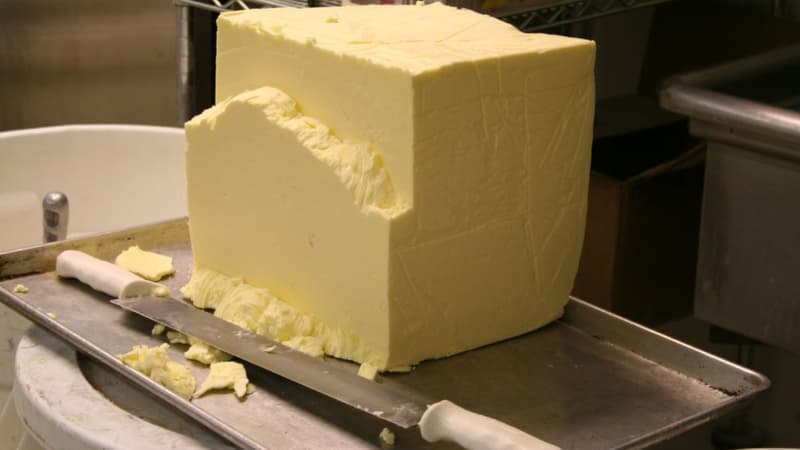Is a new butter crisis to be feared? After a 2017 marked by a historic increase in prices and unprecedented shortages on the shelves, the current state of the market shows serious signs of concern.
A fear that translates into a new rise in the prices of raw materials, even worse than the previous one. As pointed out by The marketsThe spot price of a tonne of butter broke a historic record on Thursday, reaching 8,180 euros. At the beginning of the 2023 school year, a tonne of butter was quoted at 4,260 euros. In one year, the price has soared by 92%.
Blue tongue outbreak
After the inflationary peak of 2022, when a tonne of butter was close to 8,000 euros, it fell until the end of 2023 before starting to rise again since then.
the fault of blue tongue (FCO), a viral disease transmitted by mosquitoes, which spreads rapidly on farms. The number of outbreaks recorded in France has reached 2,800, according to the Ministry of Agriculture, i.e. four times more in two weeks.
This health risk poses the threat of a sudden drop in milk production, as is already happening in other European countries where the epidemic is already present.
“The disease can cause a significant drop in production for several weeks, as well as cases of abortions and premature births,” explains the Idele livestock institute on its website. In Europe, milk collection remains moderate and is declining worldwide.
European butter is 25% more expensive
Butter production had not been spectacular for several months, with a drop of 1.6% in 2024. Farmers prefer the cream sector, which is much more profitable than churning to sell their milk stocks.
At the same time, demand remains high worldwide, particularly in the United States and Asia. A distortion that mechanically increases prices.
What will be the impact on consumer prices? Will the shortbread biscuit on the shelves and the croissant from the baker’s shop go up in flames in the coming months? Probably to some extent, according to industry experts, but not to the same extent as the rise in raw material prices.
Manufacturers and distributors will resort to imports to cushion the impact on final prices. In fact, European butter prices are 19% higher than in the United States and even 25% higher than those in Oceania. A tonne of New Zealand butter is currently 2,300 euros cheaper than French butter, making it much more competitive, even adding logistics costs.
Although the FCO vaccination campaign has entered a phase of acceleration on farms in recent days with 5.3 million doses supplied free of charge to livestock, the sector is eagerly awaiting the return of cold weather. Culicoides mosquitoes, vectors of the virus, are very sensitive to temperature. At around 15°C they stop flying and therefore stop spreading the disease.
Source: BFM TV


